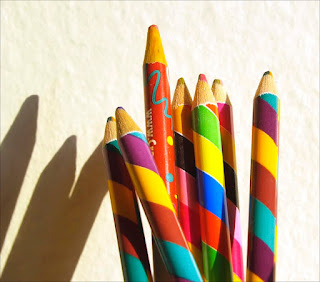
One of the great advantages of having started when I did was that Ansel Adams was still alive and there was a great deal of talk about his Zone System and getting a range of tones in your prints that appeared to match what the naked eye could perceive. It also enabled us to attain highlight and shadow details that made the print, in Ansel's words "sing". Try to look at really good reproductions of his work (there are a lot of mediocre variants floating around in print and on the interwebs).
For years, photographers have used fill flash to try to tame contrast, and usually end up with a bland, too evenly lit shot.
I shot primarily in 35mm I over-exposed and underdeveloped my film and used multigrade paper and different filters (on the same print) to express the range of tones I wanted.
What on earth does this have to do with digital photography? A lot. Learning to see (pre-visualize was how Uncle Ansel put it) the end result before the camera is in front of one's face is very hard but extremely rewarding. And when I switched to digital, all of the lessons I had learned about tonal control fell right into place.
For example, when I photograph a flower, I have already decided background, lighting, color contrast and saturation, and know where to fine the tools in the software I use to achieve what I want. I shoot in Raw format because the raw file contains all of the information that hits the camera sensor. Compressed file formats (jpg's) omit information and use the camera's proprietary color ranger for jpgs.
Rough guidelines - Low local contrast, high overall contrast. Shoot the largest file format at the lowest ISO possible given the circumstances. Go for the fullest range of tones possible. This often means avoiding hard, direct light, but with care that can be handled too. Use a tripod. Turn off the anti-vibration dingus (it eats up image area).
We have a light source that is free, easily modified, quite powerful and readily available. The Sun. Most of my shots are done using some form of window light. (The exception is portraiture when I need strobe light - more on that later). If you look around a room during the day, you will see that the quality of the light changes over time, and will be different in different parts of the room. Using available light (I've never figured out what other kind of light there is, and for that matter I'd like to see a camera that you don't point and then shoot) amazing things can be done. Close observation of the way light reflects, refracts, outlines, highlights objects; attention paid to how different kinds of lights affect the subject, will do huge amounts for the eye. All of this can be done while walking around and looking at the way light hits the world around us.
All of the above technical woo-hoo to the side, I look forward to any comments...More of my work can be seen at Fine Art America (http://fineartamerica.com) - enter Robert Ullmann in the search box.
A final note: software! the great app wars! Most of the $99 priced programs (Photoshop Elements, Paint Shop, PhotoImpact) are more than enough for most purposes. However, if one is broke, the GIMP (Gnu Image Manipulation Program - for Windows, Mac and all flavors of Linux) is wonderful. It's free and open source and really makes you think when you use it.
No comments:
Post a Comment